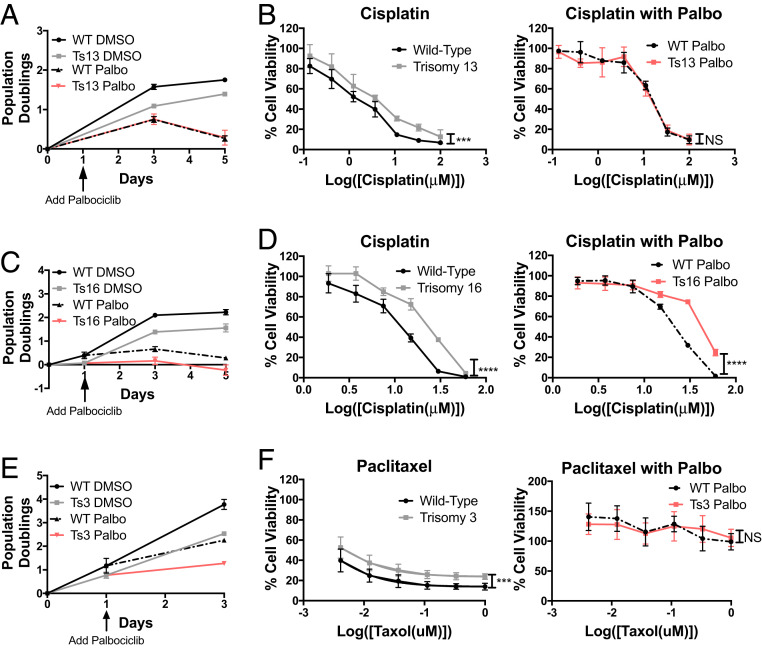Fig. 5.
Aneuploidy-induced cell-division delays confer chemotherapy resistance. (A) Growth curve of euploid and trisomy 13 MEFs treated with DMSO or palbociclib (5 μM) (n = 3). (B) Euploid and trisomy 13 cell lines were grown in the presence or absence of palbociclib (5 μM) and then treated with varying concentrations of cisplatin in the presence or absence of palbociclib (n ≥ 3). (C) Growth curve of euploid and trisomy 16 MEFs treated with DMSO or palbociclib (5 μM) (n = 3). (D) Euploid and trisomy 16 cell lines were grown in the presence of DMSO or palbociclib (5 μM) and then treated with varying concentrations of cisplatin in the presence or absence of palbociclib (n ≥ 3). (E) Growth curve of trisomy 3 HCT116 and control cells treated with DMSO or palbociclib (5 μM) (n = 3). (F) Trisomy 3 and control HCT116 cells were grown in the presence of DMSO or palbociclib (5 μM) and then treated with varying concentrations of paclitaxel in the presence of DMSO or palbociclib (n ≥ 3). Nonlinear regression curve fit and extra-sum-of-squares F test (NS, not significant, ***P < 0.001, ****P < 0.0001).

